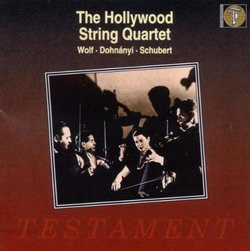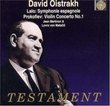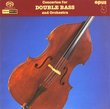| All Artists: Hollywood Quartet, Felix Slatkin, Alvin Dinkin, Paul Robyn, Eleanor Aller, Paul Shure, Franz Schubert, Ernst von Dohnanyi, Hugo Wolf Title: Hollywood Quartet plays Schubert: Quartet No14 Death & the Maiden, Wolf: Italian Serenade, Dohnanyi: 3rd Quartet Members Wishing: 1 Total Copies: 0 Label: Testament UK Release Date: 5/21/1996 Album Type: Import Genre: Classical Style: Chamber Music Number of Discs: 1 SwapaCD Credits: 1 UPC: 749677108120 |
Search - Hollywood Quartet, Felix Slatkin, Alvin Dinkin :: Hollywood Quartet plays Schubert: Quartet No14 Death & the Maiden, Wolf: Italian Serenade, Dohnanyi: 3rd Quartet
CD DetailsSimilar CDs
|
CD ReviewsRare Wolf and Dohnanyi, fine Schubert especially in the firs Discophage | France | 09/06/2006 (4 out of 5 stars) "For this issue of their treasurable, complete Hollywood Quartet series, Testament has chosen a not entirely coherent coupling, which Tully Potter's notes likens to the program a typical Central European string quartet might have played in the late 1920s or 1930s. Be it as it may, Hugo Wolf's charming if harmonically rich Italian Serenade (recorded in 1953) and Dohnanyi's 3rd quartet from 1955, with its Mitteleuropean alternation of arch-bent, post-brahmsian lyricism and quasi-hindemithian or early-bartokian vigor conjuring memories of quartets by Zemlinsky, Enesco and Walton, make a weighty bonus for the Hollywood Quartet's 1955 recording of Schubert's "Death and the Maiden".
The quasi-mythical status achieved by the Hollywood Quartet appears to be amply justified at least by the first two movements of Schubert's Quartet. The Allegro starts with a sense of ominous expectation, like danger lurking - then follows with a raging development, not so much rushed as rhythmically biting. The 2nd, lyrical theme (1:56) is underlined by a relaxation of phrasing but no significant slow down of tempo, and the Hollywood Quartet are experts at sustaining tension by always maintaining the forward-momentum. In the 2nd movement - the famous "Death & the Maiden" theme and variations - they adopt a restrained tempo, not quite the "Andante con moto" indicated by Schubert but not either the funeral march conjured by the slower still tempo favored by others (Wiener Konzerthaus Quartet, Fine Arts Quartet on Boston Skyline, Juilliard or Brodsky Quartets for later recordings). Here, it is rather evocative of the Maiden's meditation on Death - a nice effect. The variations unfold with fine, differentiated characterization, lyrical rather than dramatic in the first two, raging in the third (thanks to a brisk acceleration of tempo), charming without mawkishness in the fourth, dramatic at last - and always with crystal-clear intonation from 1st violin Felix Slatkin. But alas the Hollywoods do not take the repeats of the second part of each variation. The two remaining movements are not on an equal plane. In the scherzo, despite Schubert's "Allegro molto", the Hollywoods privilege weight over fury (for the latter, go to the Amadeus Quartet's first recording from 1953, now in a DG box), and they advocate a view of the finale, taken at an unhurried pace with a fine build-up from hushed pianissimo to fortissimo, in which charm (borne by the first violin) sometimes prevails over drama (2:12); and in which, in order to give weight to the "con forza" marking of Schubert, they apply a relaxation of tempo which slightly bogs down the movement (1:07). Still, despite these minor reservations, this was one of the better versions to be had in the mono era and remains an invaluable historical document, in excellent sound. " |


 Track Listings (8) - Disc #1
Track Listings (8) - Disc #1



